Inmarsat
-
- Fleet F77 Extends Inmarsat's Offering s Maritime Reporter, Mar 2002 #46
Inmarsat, the original mobile satcom provider for the maritime industry, has been riding the crest of a wave recently, with users at an all-time high, overall 99.9 per cent satellite reliability and the launch of its Fleet F77, Mobile ISDN and Mobile Packet Data services for the maritime community. Ruth Ling reports on what's new and what lies on the horizon.
Twenty years ago, a revolution hit the maritime industry. Satellite communications became available to ships at sea.
Back in 1982. when Inmarsat began offering onboard satellite communications, its first and only system was Inmarsat A, which offered voice, facsimile, telex and data services. After nine years of successful service and expansion into most maritime sectors, Inmarsat began offering Inmarsat C.
Initially, maritime users gained access to this packet data service via the telex network. Later, various Inmarsat service providers offered data messaging without the need to format messages as telexes. This enhancement offered users around the world access to Inmarsat C messaging using only an off-the-shelf PC and basic modem.
With the global proliferation of Internet e-mail for business and private communications, various Inmarsat service providers took steps to upgrade their Inmarsat C service by offering connectivity via the Internet.
At the same time, thousands of SOLAS-compliant merchant vessels of 300 grt or more began installing Inmarsat C as a requirement of the GMDSS. Now. with Internet service in place, the operators of these vessels and other Inmarsat C-equipped vessels can easily send and receive Internet e-mail messages with owners, operators, agents, vendors, and their families and friends.
Inmarsat now has more than 22 years of experience in designing, implementing and operating satellite networks.
Its portfolio of satellite solutions includes voice, fax, e-mail. Internet and intranet access and other data services at speeds of up to 64 kbits/sec., and permits such applications as remote telemetry and telemedicine. And. as any seafarer knows, Inmarsat provides the communications element of the Global Maritime Distress and Safety System (GMDSS).
A subsidiary of Inmarsat Ventures pic. Inmarsat Ltd owns and operates a global network of nine satellites in geostationary orbit 36.000 km above the Equator. Its solutions are delivered through a network of approximately 200 distributors and other service providers operating in more than 150 countries to end users in the maritime, land and aeronautical sectors.
But the company knows there are other satellite communication providers snapping at its heels — newer, smaller, but just as determined to be a leader in this burgeoning and exciting industry. So Inmarsat isn't resting on its laurels: it is continuously developing new products, services and initiatives, often in conjunction with partner companies.
Pre-Kmption Guarantees Priority For Safety The company's latest product is Fleet F77. a new maritime service, which was announced at Europort 2001 in November. It is unique in that it has two communications options, one which enables a shipping company to pay only for the actual volume of data sent and received, the other to be charged for the amount of time spent online, as has always been the case previously.
It is currently the only satcom solution to meet the International Maritime Organization's latest criteria for new services within the GMDSS safety standard, enabling high priority distress, urgency and safety calls to override lower priority communications.
Rescue authorities calling a vessel equipped with Fleet F77 will always be able to contact a ship, even if the voice or data channel is in continuous use at a lower priority. Not only will pre-emption work seamlessly, but it will always work in a hierarchical manner: a distress call will pre-empt all other communications, an urgency call will pre-empt both safety and routine calls, and a safety call will pre-empt a routine call.
The new IMO criteria were formulated after a maritime incident in November 1994 when the passenger liner Achille Lauro caught fire and sank off the coast of Somalia and 930 passengers were rescued by the tanker Hawaiian King. But the subsequent increased use of the Inmarsat-A terminal on the Hawaiian King prevented the maritime rescue co-ordination center (MRCC) from contacting the ship. The situation was safely resolved by the MRCC using additional safety equipment. Inmarsat C, to alert the Hawaiian King to clear the voice channel on its Inmarsat-A for safety communications.
The incident highlighted the need to provide some form of call pre-emption capability for future GMDSS satellite communication equipment. The eventual result was that, in November 1999, the IMO issued a new Resolution, A.888 (21). which set out criteria for the provision of new mobile satcom systems in the GMDSS. These are that any system being designed for use in the GMDSS must be able to recognize the four levels of priority and that new systems should provide prioritized pre-emption.
At press time, details of Inmarsat's Fleet F77 GMDSS capabilities were scheduled to be presented to the next session of the IMO Sub-committee on Communications and Search and Rescue (COMSAR) at its session in February 2002.
"From the safety point of view, the new Inmarsat Fleet F77 equipment offers a very important tool to the search-and-rescue community, and enables it to improve its service to seafarers," says Kees Koning, Head of the Communications Department of the Netherlands Coastguard, based at the Rescue Co-ordination Center in Ijmuiden.
"Many rescue operations have been hampered by the fact that the MRCC could not contact the vessel because the Inmarsat terminal was occupied for other communications," adds Koning.
In addition to the advanced safety service. Fleet F77 can deliver a wide range of superior commercial communications capabilities: voice, fax and data services at speeds of up to 64 kbit/s. including Mobile Packet Data and ISDN data delivery.
Maritime users thus have the flexibility to choose the most cost-efficient two-way communications service for their varying data requirements. The Mobile Packet Data service for the maritime community is currently offered only via Inmarsat, and charges users only for the volume of data they send and receive, not for the time they are connected. This enables mariners to send and receive information on a real-time basis, rather than the traditional practice of dialing up once or twice daily.
For the first time, ships can become an always-connected 'node' or connection in the LAN or WAN network.
In effect, they can be fully integrated into the wider business infrastructure and access all the standard desktop and specialist maritime applications available in any office environment, while shore-based managers can get enhanced reporting and connection with their ships - virtually anywhere in the world.
Potential applications include up-to-date meteorological reports, maritime chart and navigational updates, logistics, secure online business dialogue and instant messaging, e-commerce and online procurement applications, berthing information and booking for ports, accessing online safety information, 'real-time' e-mail (business and personal), access to corporate Intranets and telemedicine.
Mobile ISDN connects easily with existing applications using standard ISDN interfaces; it is ideal for data-intensive applications such as oceanographic chart updates and bulk file transfer.
Inmarsat Fleet F77 capitalizes on the established Mobile Packet Data technology, with further advances developed for the maritime environment. The terminals, which utilize a stabilized antenna, are being developed initially by Nera of Norway and Thrane & Thrane of Denmark, with additional models expected from JRC (Japan), Glocom (USA) and STN Atlas (Germany) in coming months.
Thus, the benefits already enjoyed by ship operators between their corporate offices are being made available to the maritime market, which can now harness the speed of ISDN or the flexibility and cost-efficiency of mobile packet data.
"Some solutions such as e-mails and web access will benefit from the potential of 'always connected' that the Mobile Packet Data service offers, while more data-intensive applications, such as maritime chart updates, will continue to benefit from a plug-and-play mobile ISDN solution." said Michael Butler, managing director of Inmarsat Ltd. "The point is that the customer at sea now has the choice." Inmarsat Fleet F77 service will be available via Inmarsat's global network of partners.
Telenor Broadband Services AS (Norway), Telenor Satellite Services Inc (USA). Xantic (Netherlands and Australia!.
KDDI (Japan). OteSat (Greece), France Telecom and Telecom Italia are all expected to launch the service in the second quarter of 2002. Other partners, such as Stratos (UK and Canada), MCN (China) and SingTel (Singapore), also plan to offer the service this year.
Inmarsat Fleet F77 is the first in a family of Fleet services that will eventually feature three solutions designed to meet the requirements of specific maritime sectors.
On A Roll "The development of Fleet F77 illustrates Inmarsat's continued commitment to improving communications and safety provision in the maritime industry," said Butler. "And don't forget that Inmarsat consistently exceeds the minimum IMO requirement for 99.9 percent system availability for ship-to-shore distress alerts." As evidence of this commitment, Inmarsat launched a new safety database for the maritime community in March 2001. specifically for use by Maritime Rescue Co-ordination Centers (MRCCs) around the world. The database provides MRCCs with immediate round-the-clock access to all the information needed to assist vessels in distress (including the ship's name and call sign, nationality and ship owner's 24-hour contact number), thereby cutting life-saving minutes off emergency rescue operations.
The company has also reaffirmed its support for its original analog communications system. Inmarsat A, which is still used extensively in the maritime market despite being 20 years old. with a $7 million upgrade of the Inmarsat A system, which was announced in 2001. This includes new generation Network Co-ordination Stations (NCSs) for the system, which are owned by Inmarsat and operated by Partner LESOs in Japan, Norway, Singapore and the UK.
To encourage more seafarers to use onboard satellite communications, last year also saw Inmarsat launching several marketing initiatives, including pre-paid calling cards and installing mini-M terminals and payphones on ships for crews to use independently of the other communications systems onboard.
The pre-paid cards are competitively priced for a set number of minutes, and call charges made via Inmarsat mini-M from different service providers are affordable for ships' crews.
Mini-C is an evolution of the existing Inmarsat C technology, (which was introduced in 1991), combining a transceiver and antenna in one light compact unit. It facilitates e-mail, position reporting and polling, fax, telex short-code addressing and mobile-to-mobile messaging, using significantly less power, for where the power supply is limited.
This makes mini-C a portable and inexpensive solution, and its low power consumption offers the possibility of using a solar-fed battery power source where required.
Inmarsat mini-C will enable maritime two-way messaging, monitoring and tracking applications, non-SOLAS emergency alerting, reception of weather charts and electronic chart correction. In the merchant sector, it can also deliver commercial information for shipping and transport companies, fishing and merchant fleet data applications. It can also be installed as supplementary terminals for crew communications, to complement existing communications services onboard.
Inmarsat mini-C was developed in conjunction with Inmarsat C manufacturers and was first taken up by Danish hardware manufacturer Thrane & Thrane.
"This is a real example of Inmarsat working in close conjunction with partners to respond to market and customer needs," said Butler. "We have developed and adapted an existing service for the end users who told us they needed a more portable and less power-intensive communications solution. "Mini-C complements the existing Inmarsat C and D+ offerings while being different from them — for example, Inmarsat D+ is specifically geared to support SCADA, remote monitoring, telematics and asset management applications." Existing Inmarsat C service is designed for full Safety of Life At Sea (SOLAS) GMDSS service, but this will not be available via Inmarsat mini-C.
However, there will be two slightly different models of the mini-C service: a more compact version offering conventional messaging available now and an advanced model incorporating a non- SOLAS emergency alerting facility, which will become available in early 2002.
Circle 3 5 on Reader Service Card www.mariHmereporterinfo.com Ruth Ling contributes to a variety of global telecommunications, business and consumer publications, and has worked for the BBC, the International Herald Tribune, U.K. national newspapers and magazines.
and the British Chamber of Commerce in Brazil
-
- GPS Plots The Future Of Navigation & Communications Maritime Reporter, Mar 1992 #57
, their accuracy is only about 100 meters. Corrections allow GPS navigation accuracy to be typically improved to under five meters. Last year, Inmarsat finalized two new data collection and distribution standards to be used for very accurate navigation information for its users, in addition to
-
- GMDSS Historic Change In Maritime Safety Communications Maritime Reporter, Mar 1992 #61
(about 100 miles from shore) having DSC capability. SEA A r e a A3: An area excluding Al and A2 but within t h e range of services provided by the Inmarsat geostationary satellite system which covers t h e whole globe except small areas of navigable water in t h e polar regions. SEA A r e a A4: All
-
- Lease MARISAT Satellites For Use In Three Oceans Maritime Reporter, Sep 15, 1981 #25
COMSAT General announced recently that INMARSAT, the International Maritime Satellite Organization, will lease commercial communications capacity for $10.5 million in all three existing MARISAT satellites. At its recent meeting held in London, the INMARSAT Council approved the leasing of the
-
- INMARSAT Set For February 1 Start Maritime Reporter, Oct 15, 1981 #6
A new, high-quality global satellite communication system for ships at sea, run by INMARSAT, will come into operation on February 1, 1982. INMARSAT is the International Maritime Satellite Organization which has 36 member- States. A February starting date has been assured by a decision taken by the
-
- Latest lnmarsat-2 Satellite Launch Provides More Capacity For COMSAT Customers Maritime Reporter, May 1991 #11
The second in a series of four Inmarsat-2 satellites was successfully launched recently by a McDonnell Douglas Delta rocket from Cape Canaveral, Fla. The Inmarsat-2 (F2) will occupy a permanent orbital slot at 15.5 degrees west longitude over the Atlantic Ocean Region-East (AOR-E), replacing the
-
- Sperry MCS2B SatCom INMARSAT Type Approved Maritime Reporter, Sep 1986 #65
—Literature Available Sperry Corporation, Charlottesville, Va., recently received full type approval of its INMARSAT MCS2B satellite communicator by INMARSAT. "The MCS2B represents a major new direction in shipboard communications, as it features the first ruggedized marine computer ever included as
-
- Lundberg Reappointed Director General Of INMARSAT Maritime Reporter, May 15, 1985 #16
Olof I. Lundberg has been reappointed for a second six-year term as director general of the International Maritime Satellite Organization (INMARSAT), headquartered in London. He has been director general of INMARSAT since its creation in 1979. Prior to joining the Organization he was with
-
- RDI's Satcom I Communications System Approved By INMARSAT Maritime Reporter, Sep 15, 1984 #18
RDI's Satcom I Maritime Satellite Communications System has been awarded complete type approval following extensive testing by INMARSAT of London, the International Maritime Satellite Communications Organization. This type approval designation allows RDI to install its system on ships, fishing boats
-
- Navidyne Unveils New INMARSAT Ship Terminal —Literature Available Maritime Reporter, Jan 15, 1984 #13
, recently introduced the first in a new generation of marine satellite communications equipment, the ESZ-10000. The new unit is a Standard A, Class 1 INMARSAT ship earth station. It provides instant, clear telephone, telex, and data links between ship and shore through the global INMARSAT network of satellit
-
- $180-Million Satellite Communications System Approved By INMARSAT Maritime Reporter, Jan 15, 1981 #42
, including the offshore industry, are now assured as a result of a $180-million decision made by the International Maritime Satellite Organization (INMARSAT) in London recently. This key decision involves the lease of new satellites to meet the growing international telecommunications needs of the world's
-
- Inmarsat Launch New Fleet Services Maritime Reporter, Jun 2003 #16
Inmarsat has launched the commercial availability of the Fleet F55 and Fleet F33, incorporating global voice, and a range of fax and data services. Inmarsat Fleet F55 and F33 are designed to bring the benefits of satellite communications to vessels, which were previously restricted by size and cost
-
 )
November 2023 - Maritime Reporter and Engineering News page: 22
)
November 2023 - Maritime Reporter and Engineering News page: 22Move from Talk to Action More vessels need to be connected to digital systems to realize zero-emissions shipping and data sharing is essential. he Inmarsat Connected Future Conference at this year’s London In- T ternational Shipping Week examined how the industry can move from talk to practical solutions
-
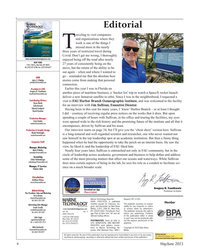 )
May 2023 - Marine Technology Reporter page: 4
)
May 2023 - Marine Technology Reporter page: 4R. Trauthwein another piece of maritime business, a ‘bucket list’ trip to watch a SpaceX rocket launch [email protected] deliver a new Inmarsat satellite to orbit. Since I was in the neighborhood, I requested a Contributing Writers visit to FAU Harbor Branch Oceanographic Institute, and was
-
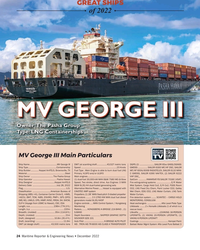 )
December 2022 - Maritime Reporter and Engineering News page: 24
)
December 2022 - Maritime Reporter and Engineering News page: 24...... VHF DSC_ Ship Operator ........................................Pasha Hawaii (1) dual-fuel 30,000-kW MAN B&W 7S80 ME-GI-Slow SatCom .............INMARSAT-FB SAILOR 7016C (VSAT) Ship Designer .....................................Keppel AmFELS Speed, Two stroke, direct drive. Aux Engines: 3 MAN Fire
-
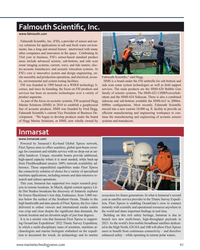 )
September 2022 - Marine Technology Reporter page: 41
)
September 2022 - Marine Technology Reporter page: 41the brand tinue the manufacturing and engineering of acoustic sensors of Hegg Marine Solutions, or HMS, now wholly owned by systems and transducers. Inmarsat www.inmarsat.com Powered by Inmarsat’s Ka-band Global Xpress network, Fleet Xpress aims to offers seamless, global spot-beam cover- age for consistent
-
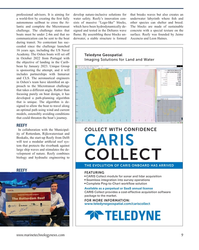 )
September 2022 - Marine Technology Reporter page: 9
)
September 2022 - Marine Technology Reporter page: 9and Water the objective of landing in the Carib- bean by January 2023. Unique Group is sponsoring the attempt, and it will includes partnerships with Inmarsat and CLS. The aeronautical engineers in Oshen’s team have identi? ed an ap- proach to the Microtransat challenge that takes a different angle. Rather
-
 )
September 2022 - Marine Technology Reporter page: 2
)
September 2022 - Marine Technology Reporter page: 2Mining .............................................................31 Triton Submarines (combined) ........................................65 Inmarsat .............................................................................41 UKHO ............................................................
-
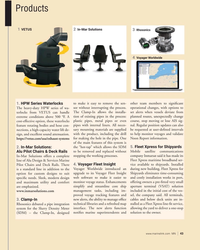 )
June 2022 - Marine News page: 43
)
June 2022 - Marine News page: 43without Mobile satellite communications Alu Pilot Chairs & Deck Rails In-Mar Solutions offers a complete stopping the working processes. company Inmarsat said it has made its line of Alu Design & Services Marine Fleet Xpress maritime broadband ser- 4. Voyager Fleet Insight Pilot Chairs and Deck
-
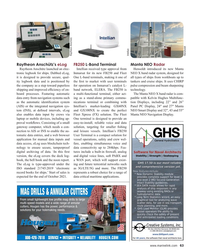 )
November 2021 - Maritime Reporter and Engineering News page: 63
)
November 2021 - Maritime Reporter and Engineering News page: 63Anschütz launched an elec- Intellian received type approval from Hensoldt introduced its new Manta tronic logbook for ships. Dubbed eLog, Inmarsat for its new FB250 and Fleet NEO X band radar system, designed for it is designed to provide secure, qual- One L-band terminals, making it one of
-
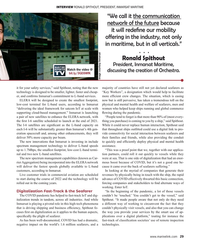 )
November 2021 - Maritime Reporter and Engineering News page: 29
)
November 2021 - Maritime Reporter and Engineering News page: 29INTERVIEW RONALD SPITHOUT, PRESIDENT, INMARSAT MARITIME “We call it the communication network of the future because it will rede? ne our mobility offering in the industry, not only in maritime, but in all verticals.” . . . Ronald Spithout President, Inmarsat Maritime, Watch the video @ discussing
-
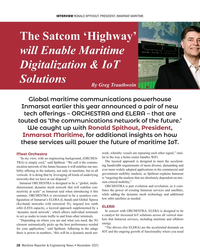 )
November 2021 - Maritime Reporter and Engineering News page: 28
)
November 2021 - Maritime Reporter and Engineering News page: 28INTERVIEW RONALD SPITHOUT, PRESIDENT, INMARSAT MARITIME The Satcom ‘Highway’ will Enable Maritime Digitalization & IoT Solutions By Greg Trauthwein Global maritime communications powerhouse Inmarsat earlier this year announced a pair of new tech offerings – ORCHESTRA and ELERA – that are touted as
-
 )
November 2021 - Maritime Reporter and Engineering News page: 2
)
November 2021 - Maritime Reporter and Engineering News page: 2today, built around the premise 30 Ship Repair: Austal USA of fuel flexibility. By Greg Trauthwein Interviews 28 Ronald Spithout, President, Inmarsat 34 Inside the Data Barge 44 Charles Good, Chairman, Cox Nautilus Data Technologies and Elliott Bay Design Group provide an 48 Arild Risholm
-
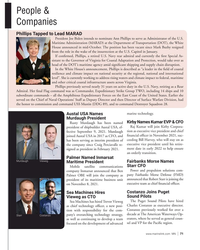 )
November 2021 - Marine News page: 71
)
November 2021 - Marine News page: 71company since Craig Perciavalle re- ment date in early 2022 to help ensure signed as president in February 2021. an orderly transition. Palmer Named Inmarsat Murdaugh Vieweg Fairbanks Morse Names Maritime President Starr CFO Mobile satellite communications Power and propulsion solutions com- company
-
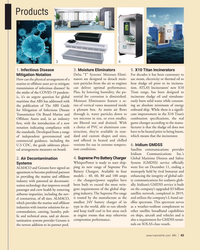 )
January 2021 - Marine News page: 43
)
January 2021 - Marine News page: 43of Supreme Pro went live on December 11, ending a agreement to become preferred partners Battery Chargers. Available in four monopoly held by rival Inmarsat and in providing the marine and offshore models – 40, 60, 80 and 100 amps enhancing the integrity of global safe- – the chargers/power supplies
-
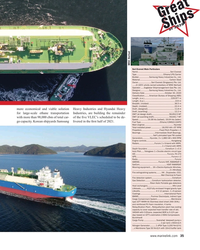 )
December 2020 - Maritime Reporter and Engineering News page: 35
)
December 2020 - Maritime Reporter and Engineering News page: 35...........Furuno x 2 Radio ....................................................................Furuno GMDSS ...................................Furuno VHF, INMARSAT C SatCom..................................................VSAT INMARSAT Mooring equipment ....16 x Electro-Hydraulic Winches, .................
-
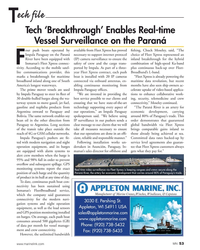 )
November 2020 - Marine News page: 53
)
November 2020 - Marine News page: 53choice of Fleet Xpress represented an River have been equipped with (IP) camera surveillance to ensure the inland breakthrough for the hybrid Inmarsat’s Fleet Xpress connec- safety of crew and the cargo trans- combination of high-speed Ka-band F tivity. According to the mobile satel- ported by Impala
-
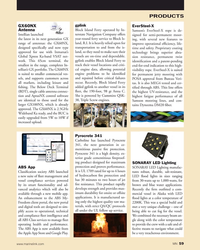 )
September 2020 - Marine News page: 59
)
September 2020 - Marine News page: 59ef? ciency, life- designed speci? cally and now type transportation to and from the is- time and safety. Proprietary coating approved for use with Inmarsat’s land, so they need to make sure their technology brings superior abra- Global Xpress Ka-band VSAT net- vessels are on-time and dependable. sion
-
 )
September 2019 - Maritime Reporter and Engineering News page: 43
)
September 2019 - Maritime Reporter and Engineering News page: 43true bene? ts of digitalization to the ship- ized IT environment can minimize risks.” ping and offshore sectors, according to a report conducted for Inmarsat by UK GovTech venture ? rm and research Tore Morten Olsen, house, PUBLIC, President Maritime, Marlink The report, ‘Trade 2.0: How Start- ups
-
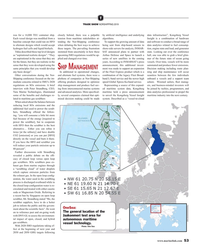 )
July 2019 - Maritime Reporter and Engineering News page: 53
)
July 2019 - Maritime Reporter and Engineering News page: 53time. series of new satellites in the coming mer of the future state of ocean going for the future, but they are realistic in the years. According to INMARSAT’s press vessels. Over time, vessels will be more sense that they were developed using the announcement, this additional invest- automated and produce
-
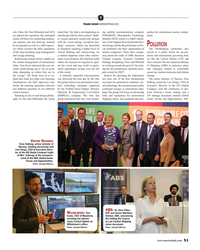 )
July 2019 - Maritime Reporter and Engineering News page: 51
)
July 2019 - Maritime Reporter and Engineering News page: 51satellite communications company gration for autonomous marine compo- are placed into operation, the command interfacing with the shore control”. Rath- INMARSAT, Monohakobi Technology nents. center will have two controlling stations, er, remote operators would only interact Institute (MTI) which is a R&D
-
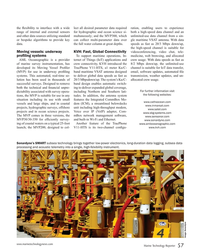 )
May 2019 - Marine Technology Reporter page: 57
)
May 2019 - Marine Technology Reporter page: 57use with small features the Integrated CommBox Mo- www.cathxocean.com vessels and large ships, and in coastal dem (ICM), a streamlined belowdecks www.inmarsat.com projects, hydrographic surveys, offshore unit including high-throughput modem, www.satel.com projects and in ocean science projects. Voice
-
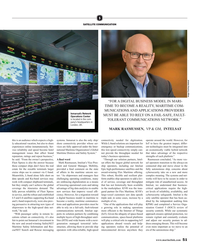 )
March 2019 - Maritime Reporter and Engineering News page: 51
)
March 2019 - Maritime Reporter and Engineering News page: 51Courtesy Intelsat “FOR A DIGITAL BUSINESS MODEL IN MARI- TIME TO BECOME A REALITY, MARITIME COM- MUNICATIONS AND APPLICATIONS PROVIDERS Inmarsat’s Network MUST BE ABLE TO RELY ON A FAIL-SAFE, FAULT- Operations Center is located in the com- TOLERANT COMMUNICATIONS NETWORK.” pany’s headquarters
-
 )
March 2019 - Maritime Reporter and Engineering News page: 50
)
March 2019 - Maritime Reporter and Engineering News page: 50Sealink VSAT dome in position and providing stable, dependable and ? exible global connectivity on board ship. Images Courtesy KVH Image Courtesy INMARSAT accompany Hapag-Lloyd Cruises’ ongo- integrating Global Ku-band VSAT with Driving innovation ships, including National Gepgraphic ing expansion
-
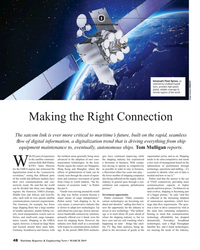 )
March 2019 - Maritime Reporter and Engineering News page: 48
)
March 2019 - Maritime Reporter and Engineering News page: 48S SATELLITE COMMUNICATION Inmarsat’s Fleet Xpress, as selected by Lindblad Expedi- tions, provides high-speed, global, reliable coverage to remote regions of the world. Image Courtesy INMARSAT Making the Right Connection The satcom link is ever more critical to maritime’s future, built on the rapid
-
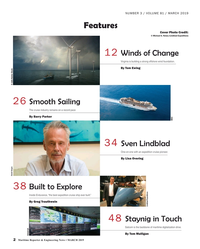 )
March 2019 - Maritime Reporter and Engineering News page: 2
)
March 2019 - Maritime Reporter and Engineering News page: 2ship ever built.” By Greg Trauthwein Lindblad Expeditions 48 Staynig in Touch Satcom is the backbone of maritime digitalization drive. By Tom Mulligan Inmarsat 2 Maritime Reporter & Engineering News • MARCH 2019 MR #3 (1-9).indd 2 3/8/2019 12:43:17 P
